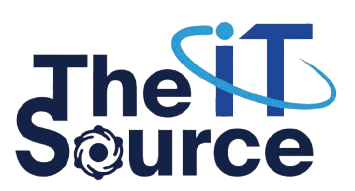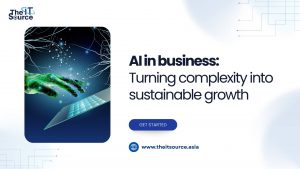Software IT outsourcing in Vietnam: Scalable, reliable solutions

What is software IT outsourcing, and why does it matter?
In an era where agility defines success, software IT outsourcing has emerged not merely as a cost-cutting tool, but as a strategic pillar in business growth. The practice allows organizations to delegate all or part of their software development efforts to external vendors, often in countries with specialized talent pools and favorable cost structures. More than a trend, outsourcing has become a necessity for companies striving to maintain competitive advantage while optimizing budgets.
For many businesses especially those operating across Europe and Japan outsourcing helps close the widening gap between innovation demand and in-house capabilities. It allows teams to focus on strategic initiatives while ensuring their tech stack evolves with market demands.
Vietnam, once an overlooked destination, now stands out as a high-value outsourcing hub. According to NashTech Global, the country exports over $3.5 billion worth of software and IT services annually. Reports from Dirox and Kearney also position Vietnam among the top 6–7 global destinations for software outsourcing.
Why Vietnam? Benefits of outsourcing to Vietnam
Unlike saturated markets like India or the Philippines, Vietnam offers a blend of economic competitiveness and increasing technological sophistication. The cost advantage is undeniable: average developer salaries in Vietnam are 40%–60% lower than in Western Europe. But cost alone doesn’t drive long-term B2B partnerships.
Vietnam’s IT workforce is young, technically skilled, and rapidly maturing. Nucamp reports over 55,000 IT graduates enter the labor market each year, many trained in full-stack development, cloud infrastructure, or AI/ML technologies. Beyond academic degrees, Vietnamese developers are increasingly earning global certifications from AWS, Microsoft, and Google Cloud, positioning them as capable contributors to global tech ecosystems.
The country also benefits from a rapidly expanding digital infrastructure. Vietnam’s government continues to invest in nationwide 5G coverage, digital upskilling, and cybersecurity resilience creating an enabling environment for tech export growth.
For EU-based firms particularly those in logistics, fintech, and SaaS the overlap in work hours (thanks to a time difference of only 5–6 hours) and cultural compatibility (structured communication, professionalism, and commitment to timelines) make Vietnam an increasingly seamless fit.
You can read more on how global enterprises evaluate software outsourcing markets.
How to choose the right outsourcing company in Vietnam
One of the most frequent challenges in IT outsource is the mismatch of expectations. A European manager might expect Agile delivery, transparent reporting, and quick responses while an unprepared vendor might focus on task execution alone.
To mitigate this, a qualified outsourcing company in Vietnam should emphasize consultancy, not just code. They offer discovery workshops, system audits, technical advisory, and even co-innovation labs. The best vendors are no longer passive executors, but embedded collaborators capable of aligning with the client’s product vision.
When evaluating partners, companies should look beyond rates and ask deeper questions:
- Does the vendor have experience in your vertical (e.g., healthcare, e-commerce, logistics)?
- How mature is their DevOps or CI/CD pipeline?
- What SLAs are in place for post-deployment support?
- Can they provide dedicated QA and security auditing?
Beyond technical skills, trust and transparency play a vital role. EU clients, in particular, seek partners that document clearly, provide sprint-by-sprint visibility, and offer post-deployment support with robust governance models.
Practical insights from outsourcing partnerships
Many EU and Japanese companies have reported significant gains by partnering with Vietnamese software firms. Common outcomes include reduced development costs, accelerated time-to-market, and higher satisfaction scores through localization and continuous delivery models.
For example, a Dutch e-commerce startup outsourced their backend rebuild to a Ho Chi Minh City-based team. With weekly sprints, automated testing, and integrated design reviews, they launched a fully re-architected platform in under five months cutting infrastructure costs by 30% and reducing churn rate by 18%.
While case-specific metrics vary, consistent themes include improved agility, better documentation, strong communication, and compliance with international standards.
Mitigating risks in outsourcing

Mitigating risks in outsourcing
Outsourcing, while advantageous, is not without risk. Time zone delays, IP security concerns, and communication barriers can erode value if unmanaged.
Successful projects are built on shared goals and governance. Leading companies now require:
- Clear documentation of deliverables
- Defined escalation paths
- Data handling protocols aligned with EU privacy directives
- Regular performance reviews and stakeholder check-ins
Vietnamese vendors with experience in B2B compliance and enterprise architecture tend to outperform freelance teams or transactional agencies. Enterprises should also look for providers that have verifiable certifications (such as ISO/IEC 27001) and audit trails for decision-making.
Pricing models in outsourcing: Choosing what works
Outsourcing engagements come in multiple forms, and choosing the right pricing model is critical to success.
- Fixed-price contracts work best for small, well-defined projects where scope creep is minimal.
- Time and Materials (T&M) suits iterative projects with evolving requirements, offering flexibility but requiring greater governance.
- Dedicated team models offer long-term value by embedding offshore engineers into your team’s workflows, aligning them with product goals and delivery roadmaps.
Many Vietnamese firms offer hybrid pricing structures to adapt to both startup MVP builds and enterprise-scale transformation. Clear agreements, milestone-based billing, and transparent reporting are crucial to make any model successful.
Is outsourcing right for your organization?
Ask yourself: Are you struggling with hiring? Are legacy systems eating up your budget? Do you need to fast-track a product launch without compromising quality?
If the answer is yes, then software IT outsourcing done strategically can accelerate time-to-market, increase operational resilience, and free up your internal teams for more valuable work.
The IT Source, for instance, offers end-to-end software development and maintenance tailored for European and Japanese clients who demand precision, data security, and results. Whether it’s a short-term MVP build or a multi-year transformation roadmap, outsourcing doesn’t mean handing off control it means choosing the right partner to extend your capabilities.
Final thoughts and next steps
Outsourcing to Vietnam is no longer a backup plan it’s a proactive choice for companies that want smart growth without compromise. The firms that get it right aren’t just saving money they’re building scalable systems, gaining fresh insights, and unlocking new value streams across their digital journey.
Contact The IT Source – your partner for software IT outsourcing in Vietnam and beyond to begin your transformation.


 日本語
日本語
